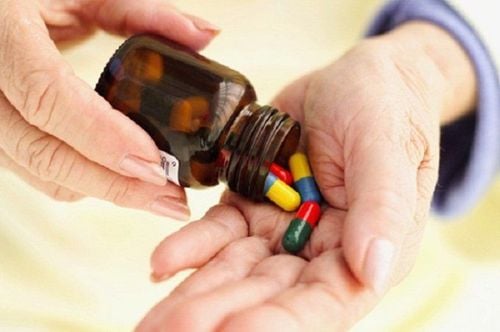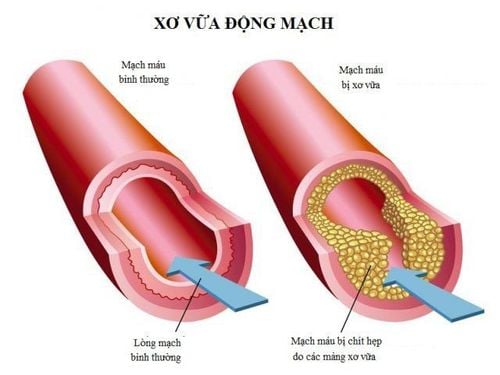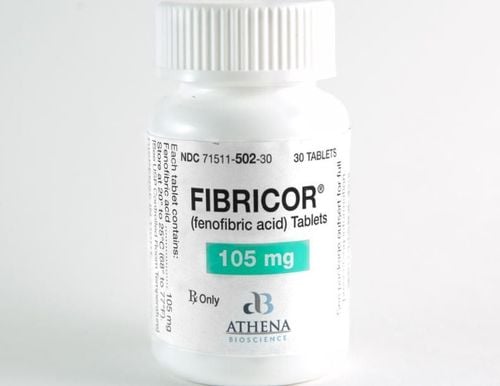This is an automatically translated article.
The article was professionally consulted by Doctor Tran Quoc Tuan - Emergency Medicine Doctor - Emergency Resuscitation Department - Vinmec Phu Quoc International General Hospital.Atherosclerosis of the lower extremities if not detected and treated in time, the patient is at risk of amputation due to necrosis due to vascular occlusion. More dangerously, the patient can die from complications in the heart such as myocardial infarction, sudden death or in the brain such as a cerebrovascular accident.
1. What is lower extremity atherosclerosis?
Atherosclerosis is a systemic disease that damages the arteries in many different organs. Often people with atherosclerosis of the lower extremities often have atherosclerosis in the coronary and cerebral arteries.If not treated very aggressively, atherosclerotic disease of the lower extremities causes necrotic complications due to occlusion, unable to supply blood to the area behind the occluded leg. More dangerous, the patient can die from heart complications such as: myocardial infarction, sudden death or in the brain such as: cerebrovascular accident. Among patients with atherosclerotic leg disease, 55% died from heart complications and 10% died from cerebrovascular accident.
Currently, the main cause of atherosclerosis of the lower extremities has not been identified, however, some characteristics or habits can increase the risk of disease such as: High blood pressure; smoke; people with diabetes; people who are overweight, obese, lack of physical activity; unhealthy diet; people with a family history of early heart disease.
2. Signs of atherosclerosis of the lower extremities
2.1 Mild stenosis of the iliac-femoral artery Patients usually have no symptoms. Detectable only by measuring the ankle-brachial index. Patients with no symptoms are common in diabetics, elderly, neurological sequelae that make movement less so they do not show symptoms.
Hình ảnh xơ vữa động mạch, hẹp động mạnh chi dưới
3. Treatment and prevention of atherosclerosis of the lower extremities
3.1. Treatment of lower extremity atherosclerosis 3.1.1 Smoking cessation Smoking is an important risk factor for lower extremity atherosclerosis. Tobacco has the effect of increasing LDL and decreasing HDL , promoting vascular muscle in the blood vessels atherosclerotic. In addition, tobacco smoke increases platelet adhesion, increases fibrinogen, HCT and consequently increases blood viscosity. In addition, stopping smoking also helps reduce symptoms of the disease. In addition to education and self-discipline, pharmacovigilance measures are also recommended. Drugs used to quit smoking include: nicotine replacement, bupropion was 16 and 30% effective respectively in stopping smoking.3.1.2 Controlling Blood Sugar Diabetes promotes the general process of atherosclerosis, causing ischemic complications in the peripheral blood vessels, peripheral neuropathy, and reduced resistance to infectious agents. These factors easily lead to foot ulcers and foot infections. Good glycemic control must be achieved with an HbA1C in the range of 6-7% because, according to studies, this goal of treatment helps prevent microvascular complications.
3.1.3 Exercise Exercise Patients practice to improve function, increase walking skills, improve the severity of claudication, and exercise regimens that can be used for walking on a rolling mat or walk in the street with enough intensity to produce an intermittent limp, then rest until the pain is gone and practice again. Each workout lasts 30-60 minutes. Each training session is conducted 3 times a week and for 3 months.

Bệnh xơ vữa động mạch chi dưới gây ra biến chứng hoại tử vì tắc mạch
3.2. Prevention of atherosclerosis of the lower extremities 3.2.1 Diet Diet is very important for the prevention of atherosclerosis of the legs. It is necessary to limit the intake of animal fats such as lard, beef, and chicken fat, and instead use vegetable oils such as peanut oil and sesame oil. Red meat should be avoided because they contain a lot of cholesterol. You should not eat coconut oils because coconut oil is high in saturated fatty acids, which can easily cause atherosclerosis in general. Eat soy-based foods like tofu. Each week should eat 2-3 times fish in each meal instead of eating meat, because fish fat is rich in omega-3 fats, which are very good for artery walls. Do not eat intestines such as pig intestines, buffalo intestines, cow intestines and limit eating shrimp and eggs. The daily meals should increase the amount of green vegetables and fruits (especially for people with diabetes, what kind of fruit should be eaten under the advice of a doctor). 3.2.2 Living mode Need to move the body such as exercise, walk, play sports depending on your strength. If you exercise regularly every day, methodically and in accordance with each person's conditions, it can increase good cholesterol, reduce bad cholesterol and at the same time reduce blood pressure for people with chronic hypertension. Avoid stress, always keep a happy and healthy mental life.
Atherosclerosis of the lower extremities is a serious condition that can cause many dangerous complications. Therefore, when patients detect signs and risks, they need to see a doctor to be examined and given a scientific treatment plan. Vinmec International General Hospital is a high-quality medical facility in Vietnam with a team of highly qualified medical professionals, well-trained, domestic and foreign, and experienced. A system of modern and advanced medical equipment, possessing many of the best machines in the world, helps to detect many difficult and dangerous diseases in a short time, supporting the diagnosis and treatment of effective doctors. most fruitful. The hospital space is designed according to 5-star hotel standards, giving patients comfort, friendliness and peace of mind.
Please dial HOTLINE for more information or register for an appointment HERE. Download MyVinmec app to make appointments faster and to manage your bookings easily.













